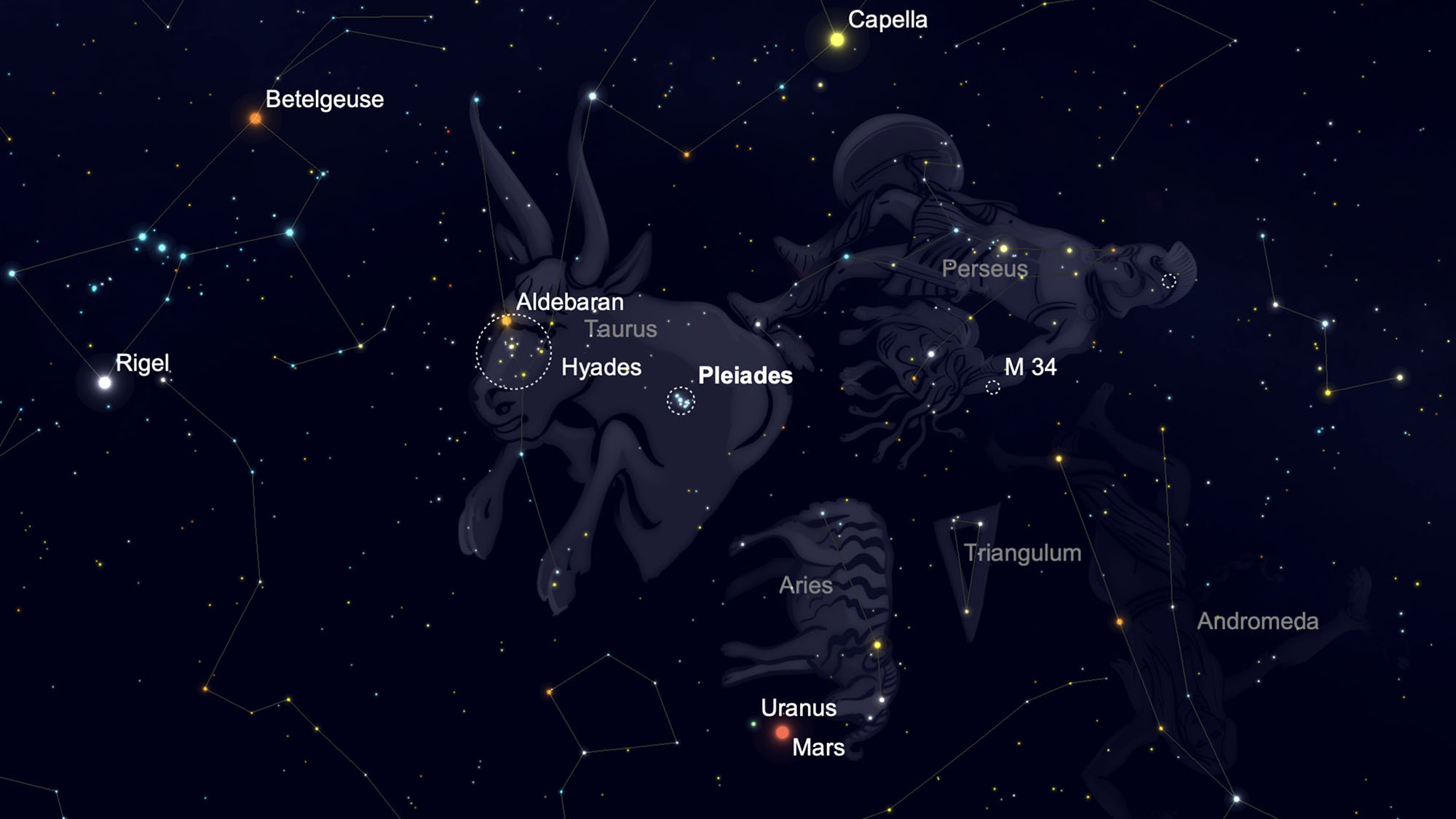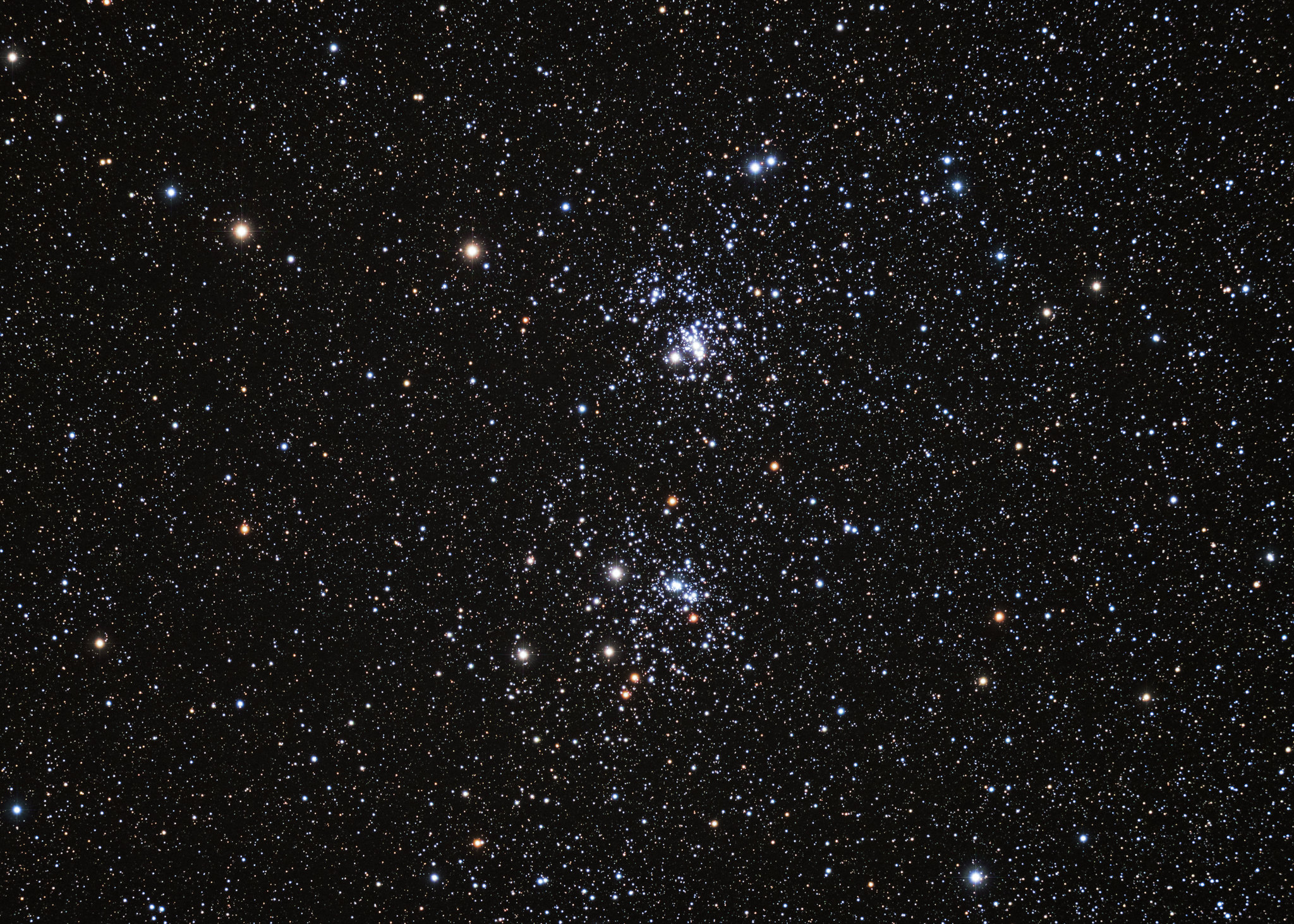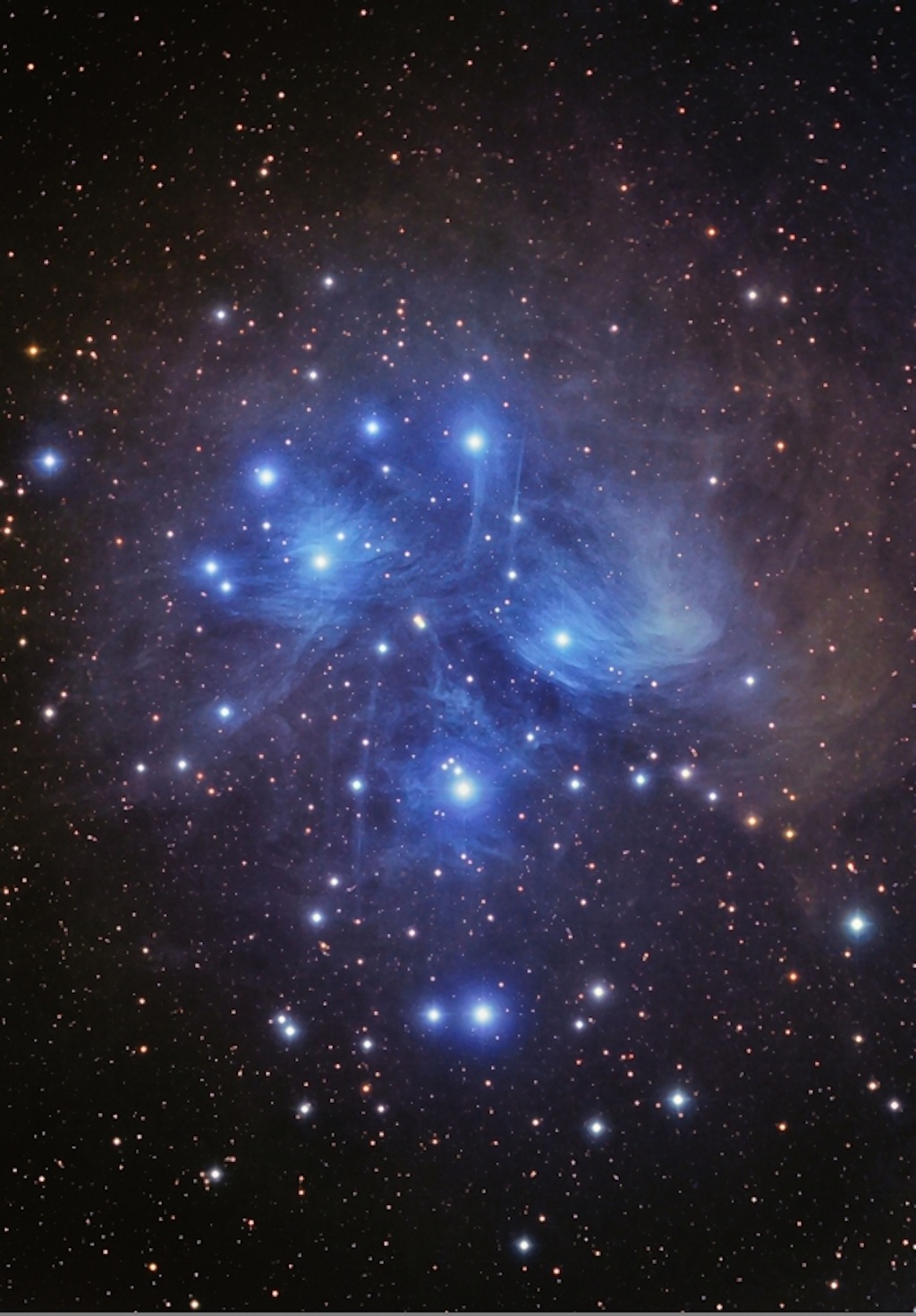For much of the U.S. we're now into the coldest part of the winter season, and for those who may have recently received a telescope for a holiday gift, the biggest complaint usually is: "I'd love to spend time looking at the wintertime stars, but it's so cold!"
This is hardly an excuse to stay inside. As I said two years ago in this Space.com skywatching column, you can properly protect yourself against the elements without suiting up like an astronaut about to walk on the moon.
And rather than a telescope, I would consider binoculars on those really frigid nights. With binoculars you can step out to look at the sky briefly, whereas a telescope requires an investment of time setting it up and taking it down.
Related: Behold, the view of Earth's longest night from space
The current winter sky is particularly well-suited to low-power observing and contains many fine binocular objects. I'd like to recommend three books which are ideal if you plan to scan the skies with binoculars.
The first is "Touring the Universe through Binoculars" by Philip S. Harrington (John Wiley & Sons, 1990). Next is "Binocular Highlights" by Gary Seronik (Sky & Telescope, 2017). And finally, "Stargazing Basics" by Paul E. Kinzer (Cambridge University Press, 2008).
Two for the price of one!
This week's sky, at around 9 p.m. local time, is notable for the many star clusters that invite inspection in binoculars. Let's start with the Double Cluster in Perseus. Face northwest about halfway up from the horizon to the point overhead and you'll see the familiar zig-zag row of five stars of the constellation Cassiopeia, the queen. Now with binoculars, scan the area to the upper left of the queen and you'll run across the Double Cluster.
Breaking space news, the latest updates on rocket launches, skywatching events and more!
The total light of this rich scatter of stardust is equivalent to the brightness of a fourth-magnitude star, so the naked eye sees it as a brighter patch of the Milky Way. (Magnitude is a measure of brightness, with negative numbers denoting the brightest objects. For comparison, the Andromeda galaxy is just slightly brighter at magnitude 3.44, and the faintest magnitude visible to the naked eye from a dark sky is 6.5.)
As its moniker suggests, there are actually two concentrations of stars here, called h Persei and Chi Persei — a "double" cluster. The ancient astronomers Hipparchus and Ptolemy described them as a "cloudy spot." It was Galileo Galilei with his crude telescope who first noticed they were really two clusters of stars. Astronomers estimate that their apparent brightness is dimmed by roughly 1.7 magnitudes thanks to interstellar dust.
When we take this into account, it turns out that the ten brightest stars of this Double Cluster are actually comparable to such brilliant luminaries as Betelgeuse and Rigel in the constellation Orion, the hunter, for each cluster contains very massive blue stars and some of the brightest red stars known. The blue stars are extremely hot, on the order of 100,000 degrees, blazing out energy so fast that they cannot keep it up for more than 10 million years, changing to red as they age. Estimates place these star clusters at a distance of about 7,400 light-years from Earth. Together, their apparent size in the sky exceeds that of the full moon, and in binoculars or a small, low-power telescope they form one of the most impressive and spectacular objects in the entire heavens.
Face of the angry bull
Next, turn your attention due south and enjoy the sight of the most brilliant of all the constellations, Orion, the unter. Using his distinctive three-star belt, extend a diagonal line upwards, which will eventually take you to Taurus, the bull.
The charging bull's angry face is plainly marked by the fine V-shaped cluster of the Hyades. Notice the first-magnitude orange star at the end of the lower arm of the V, which represents the Bull's fiery eye. That's Aldebaran, "the follower"; it rises soon after the famous Pleiades star cluster, which we'll meet in a moment, and pursues the cluster across the sky. I've always marveled at how Aldebaran — really just an innocent bystander — just happens to lie along our line of sight to complete so perfectly the cluster's characteristic "V" shape.
The Hyades are among the nearest of the star clusters, which explains why so many of the separate stars can be seen. At the middle of each arm is an attractive stellar grouping or "subcluster" that binoculars enhance. At a distance of 130 light-years from Earth, the Hyades members travel through space like a flock of geese, their paths ultimately converging toward a point between the star Procyon in Canis Minor and Betelgeuse in Orion, while receding from us at the rate of 100,000 mph (160,000 kph). Aldebaran is moving toward the south almost at right angles to the cluster's motion and twice as fast. Taurus's V-shaped head is, therefore, going to pieces. After 50,000 years it will be no more.
Related: Watch stars drift and constellations change shape using mobile apps
The Seven Sisters
South of Perseus is one of the best — some might say the best — binocular sights in the entire sky: the Pleiades star cluster. It is the most prominent open (or galactic) cluster in our heavens, even though it is 400 light-years from us. An odd sidelight about this object is that some early 18th-century astronomers believed its bright star, Alcyone, was the center of the universe around which all else revolved.
This cluster, popularly known as the Seven Sisters, may be one of the first astronomical subjects recorded. It was known to the ancient Greek poet Hesiod nearly 3,000 years ago, and a reference to it has been found in Chinese annals dated around 2357 B.C. It is also mentioned three times in the Bible. The Japanese Feast of Lanterns festivals are remnants of ancient Tauric rites in honor of the Pleiades, and if your car is a Subaru, that is the Japanese name for this star cluster.
In fact, the Subaru logo consists of six stars, and indeed to most eyes, while at first glance the Pleiades look like a shimmering little cloud of light, closer examination will readily reveal a tight knot of six stars. Why they are called the seven sisters is unknown, though some with acute vision have recorded a dozen or more "sisters" under excellent conditions. Several stars in the cluster seem to be enveloped in clouds of dust, perhaps left over from the stuff of which they were formed. The entire cluster may contain a total of perhaps 250 stars.
When giving planetarium shows, I'll ask my audience why they think Taurus is so angry. After hearing some suggestions, I'll point to the Pleiades and remark that, "It's probably because he has a bunch of bumblebees stinging his back." And interestingly, it is bumblebee workers — which are the female bumblebees — and queens, that possess stingers.
The Manger (or a swarm of bees)
Finally, there is a patch of light hovering halfway up in the east-southeast sky. Using binoculars, sweep the region roughly midway between the bright star Regulus in the constellation Leo, the lion and Pollux in the constellation Gemini, the twins, and it is there that you will find one of the brightest galactic star clusters. But what to call it?
Some astronomy texts speak of "Praesepe, the Manger," while others call it the "Beehive." A manger is defined as "a feeding trough for donkeys." The cluster was apparently first called Praesepe 20 centuries ago. Galileo first resolved it into stars in 1610. A few dozen stars can be seen in binoculars or a low-power telescope.
The cluster's relatively new moniker — "Beehive" — may have evolved almost four centuries ago, when some unknown person, upon seeing so many stars revealed in one of the first crude telescopes cried out: "It looks like a swarm of bees!" Hence, the reason for why some astronomy books call the cluster "Beehive," while others call it "Praesepe." Perhaps the older designation "Praesepe" is preferable since two nearby stars of the constellation Cancer, the crab have been known for 2,000 years as Asellus Borealis and Asellus Australis — the northern and southern ass colts — feeding from a manger.
Our society has categorized donkeys as willing but somewhat stubborn beasts — an unfair assumption as they actually have a keen sense of self-preservation, and think about things before they react. That having been said, I would think they are indeed rather wise; certainly they would hardly try to feed from a beehive!
Joe Rao serves as an instructor and guest lecturer at New York's Hayden Planetarium. He writes about astronomy for Natural History magazine, the Farmers' Almanac and other publications. Follow us on Twitter @Spacedotcom and on Facebook.

Joe Rao is Space.com's skywatching columnist, as well as a veteran meteorologist and eclipse chaser who also serves as an instructor and guest lecturer at New York's Hayden Planetarium. He writes about astronomy for Natural History magazine, Sky & Telescope and other publications. Joe is an 8-time Emmy-nominated meteorologist who served the Putnam Valley region of New York for over 21 years. You can find him on Twitter and YouTube tracking lunar and solar eclipses, meteor showers and more. To find out Joe's latest project, visit him on Twitter.




